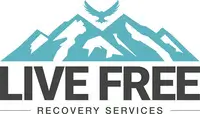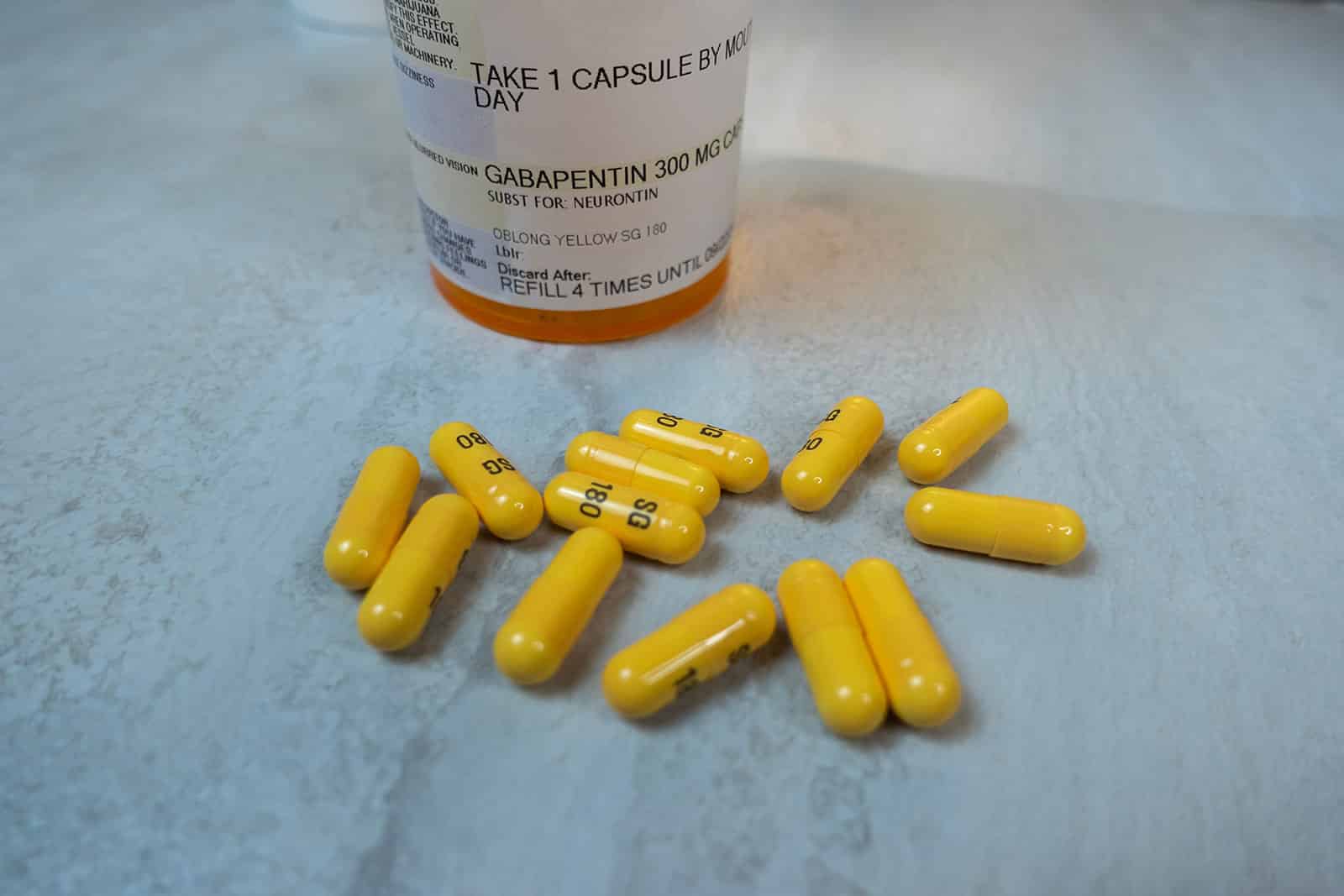Gabapentin is a medication that was designed for patients suffering from epilepsy or neuropathic pain. Over the years, however, it has been used for off-label purposes to help patients with anxiety disorders, bipolar disorder, and depressive disorder.
Because Gabapentin acts as a calming agent, there is a potential for physical dependency as well as addiction. Some individuals may experience mild to severe withdrawal symptoms when they abruptly discontinue using the drug.
This article delves into Gabapentin’s uses, its potential for dependency, and the best ways of managing withdrawal symptoms.
What Is Gabapentin?
Gabapentin was originally designed to be a muscle relaxant and anti-spasmodic medication. Although it was first studied as an antiepileptic drug in 1987, it wasn’t until 1993 that it was approved for medical use by the FDA. Since 2004, it has been available generically.[1]
The drug was designed to mimic the neurotransmitter GABA, which is a neurotransmitter in the body that affects the nervous system. Like the neurotransmitter, Gabapentin affects the body’s central nervous system and can be used to help manage neurological conditions.[2]
Some primary uses of Gabapentin are for:
- Epilepsy
- Neuropathic pain
- Restless leg syndrome
- Off-label uses, such as panic disorders
Off-Label Uses
Surprisingly, just 1% of Gabapentin prescriptions are for epilepsy and neurological conditions. It is most often prescribed for off-label uses, in the field of psychiatry.[3] As of 2019, Gabapentin was the fourth most prescribed medication in the U.S.[4]
- The off-label uses include:
- Depressive disorder: Of those prescribed Gabapentin for off-label uses, 5.3% listed a depressive disorder.[4]
- Anxiety disorder: Of those prescribed Gabapentin for off-label uses, 3.5% listed an anxiety disorder as the drug can help calm those with anxiety.[4]
- Bipolar disorder: Of those prescribed Gabapentin for off-label uses, 1.8% listed a bipolar disorder, as the drug helps with symptoms like anxiety and mood swings.[4]
Mechanism of Gabapentin Dependence
As with many medications, taking the medication for a long period can result in physical dependence. Physical dependence happens when the body grows accustomed to the drug and goes into a state of withdrawal when the drug is discontinued.
The first sign of dependence on Gabapentin or any drug is developing a tolerance. Over time, your body needs higher doses to feel the same effects. This may force you to increase the amount you take or increase the frequency.
Your body may also go through neuroadaptive changes. This means the neurotransmitter activity in your body adjusts to the presence of Gabapentin, relying on it for stability. When the drug is discontinued, your body goes through a series of withdrawal symptoms. Like with any addiction, once your body develops a physical dependence on Gabapentin, your cravings for it increase.
What Is the Difference Between a Gabapentin Dependence and an Addiction?
When you develop a physical dependence on Gabapentin, you need the drug to achieve a sense of well-being and mental stability.
An addiction, on the other hand, is a rather extreme form of physical dependence. Individuals compulsively seek the drug and continue to take it despite the drug being harmful to their health and lifestyle.

What Are the Symptoms of a Gabapentin Withdrawal?
Users may experience common symptoms, physical symptoms, and severe symptoms.
Common symptoms include:
- Anxiety: Anxiety may be mild or severe. Some users may have panic attacks.
- Irritability: Some users may experience mood swings and irritability.
- Depression: Mood swings can cause mild or severe depression.
- Insomnia: Some users may have difficulty falling asleep or staying asleep.
Physical symptoms include:
- Headaches: Headaches can range from mild to severe.
- Nausea and vomiting: This may include mild stomach discomfort, nausea, or vomiting.
- Bodily pain: There may be muscle aches and flu-like symptoms.
- Tremors: Some users may experience tremors, specifically in the hands.
- Dizziness: There may be feelings of lightheadedness or dizziness.
Severe symptoms may include:
- Seizures: Gabapentin is designed to control epilepsy, and withdrawal symptoms can trigger seizures.
- Palpitations: Some users may suffer palpitations or an irregular heartbeat.
The Timeline of a Gabapentin Withdrawal
Usually, Gabapentin’s withdrawal symptoms will start after about 12 hours of discontinued use and will last for about 10 days.[5] The severity of these symptoms will depend on how much Gabapentin the user was taking, the duration, their age, and if the medication was mixed with other drugs.
The initial symptoms start to occur roughly 12 hours after the last dose. Individuals will feel anxious, restless, and irritable. They will also have trouble sleeping. The initial symptoms last hours to days after the last dose.
The peak symptoms usually occur between 24 to 72 hours. Individuals will experience nausea or vomiting, flu-like symptoms, muscle aches, insomnia, headaches, and possibly hand tremors.
After one week, symptoms will improve, although some individuals may experience depression. There are also residual and long-term effects. For some, there may be mild anxiety and insomnia issues. Depression – mild or severe – may be ongoing.
What Are the Factors That Influence Withdrawal Severity?
Not every individual will experience the same withdrawal symptoms. For some, the symptoms may be more severe than for others. Various factors influence the severity of withdrawal symptoms.
Duration of Gabapentin Use
How long individuals have been using the drug will determine how severe their withdrawal symptoms are. If they have been taking the drug for several weeks to several months, the withdrawal symptoms will typically be rather mild and manageable.
If individuals have been using the drug for longer than a few months and up to a year or so, the withdrawal symptoms may be more intense as the body has adapted to the drug’s presence. Those who have been taking the drug for years, however, may experience severe withdrawal symptoms.
Dosage and Frequency
Another factor that affects the intensity of withdrawal symptoms is the dosage and the frequency. For individuals who have been taking a high dosage of Gabapentin, the withdrawal symptoms will probably be rather severe. Individuals who have been taking the drug a few times a day will also experience intense withdrawal symptoms.
Individual Physiology and Metabolism
Those with faster metabolisms can remove the drug from their system faster, resulting in milder withdrawal symptoms. Genetic factors are important, too. Some people have a naturally lower tolerance for drugs than others, and this may mean a difference in how sensitive their body reacts to medications.
The overall health of individuals also plays a role. Those with medical conditions, such as diabetes, high blood pressure, or clinical depression, may have a harder time coping with the withdrawal symptoms. On the other end of the scale, those whose health is generally good can expect a quicker recovery and milder withdrawal symptoms.
Concurrent Use of Other Substances
When Gabapentin is mixed with other substances, like alcohol or other drugs, these may intensify the withdrawal symptoms. It can also complicate the symptoms as healthcare officials may not be sure if the symptoms are due to the abrupt use of Gabapentin or the abrupt use of another substance.
Managing and Treating Gabapentin Withdrawal
Managing and treating Gabapentin withdrawal often takes a team of healthcare professionals. It’s important to taper the drug off as opposed to abruptly discontinuing the medication. Tapering lets the body adapt slowly and reduces the risk of seizures.
Medical supervision while withdrawing from Gabapentin is crucial as well. Healthcare professionals are prepared for more severe withdrawal symptoms, such as seizures, and can provide medical care on the spot. Before the detox stage, healthcare professionals assess co-occurring conditions in addition to the medical history of the individual. This can help ensure individuals are safe when they withdraw from the drug. In addition, medical staff can monitor the progress and make any necessary adjustments.
Support systems, such as therapy, are also a key element when managing and treating withdrawal symptoms. They can help individuals deal with psychological withdrawal, they can offer coping strategies to prevent relapses, and they can explore the underlying reasons for the dependency or the addiction. Besides individual therapy, group therapy allows individuals to connect with others going through similar challenges. This can help reduce feelings of depression and isolation.
Some individuals may need medication to help them manage the withdrawal symptoms. Medication-assisted treatment (MAT) can be instrumental in helping people end their physical dependency on Gabapentin.[6] Some medications prescribed may be antidepressants or even alternative seizure medications if an individual is experiencing seizures.
Risks of Unsupervised Withdrawal
One of the best ways of managing Gabapentin withdrawal is under the supervision of healthcare professionals. Unsupervised withdrawal can be dangerous and comes with several risks.
If an individual was taking Gabapentin to control seizures, then abruptly discontinuing the drug may trigger a seizure. If there is no medical staff supervising the withdrawal, a sudden seizure can be life-threatening. There may also be additional withdrawal symptoms that are severe.
In addition, individuals who have a co-occurring disorder may suffer complicated withdrawal symptoms triggered by other drugs they’re using.
If you intend to discontinue using Gabapentin, it’s important to seek medical intervention so that you can be tapered off the drug. Abrupt discontinuation is dangerous, especially without medical supervision.
Preventing Gabapentin Dependence
If you believe you have a problem with Gabapentin, seek medical help. Preventing Gabapentin dependence in the first place is preferable.
To prevent dependence, follow the prescribed dosages and duration given to you by your doctor. It’s important not to increase your dosage without consulting your doctor first.
You should also have regular check-ups with your doctor to ensure that you are not developing a physical dependency. Your doctor can monitor your condition and make adjustments to your dosage if needed.
Finally, educate yourself about the early signs of dependence. If you are aware of what the signs are, you can try and nip your dependence in the bud. Communicate with your doctor honestly if you feel you are becoming physically dependent on the drug.
Although this may seem like common sense, it’s worth repeating. Mixing Gabapentin with alcohol or other drugs may result in misuse and finally dependency. If you have a co-occurring mental health issue, talk to your doctor about the different drugs you may have to take so that you can stagger the times you take them. This may help reduce dependency.
Live Free Recovery Services
While Gabapentin offers therapeutic benefits to those suffering from anxiety, bipolar disorder, or depressive disorder, it’s important to use it only as prescribed by your doctor. If you start to see signs of dependency, seek medical advice.
At Live Free Recovery Services, we can help individuals recover from drugs with our inpatient and outpatient programs. We also offer individualized treatment plans for those suffering from substance use disorders. If you need to detox and you’re worried about Gabapentin’s withdrawal symptoms, contact our team in New Hampshire. We can help you detox from the drug safely.
References
[1] https://www.ncbi.nlm.nih.gov/books/NBK493228/
[2] https://www.sciencedirect.com/topics/neuroscience/gabapentin
[3] https://www.thecarlatreport.com/articles/3628-an-off-label-guide-to-gabapentin
[4] https://ps.psychiatryonline.org/doi/10.1176/appi.ps.202000338
[5] https://www.drugs.com/medical-answers/long-gabapentin-withdrawal-3554130/
[6] https://www.fda.gov/drugs/information-drug-class/information-about-medication-assisted-treatment-mat


